A decade of pesticides, GMOs, and alternatives to chemical-intensive farming
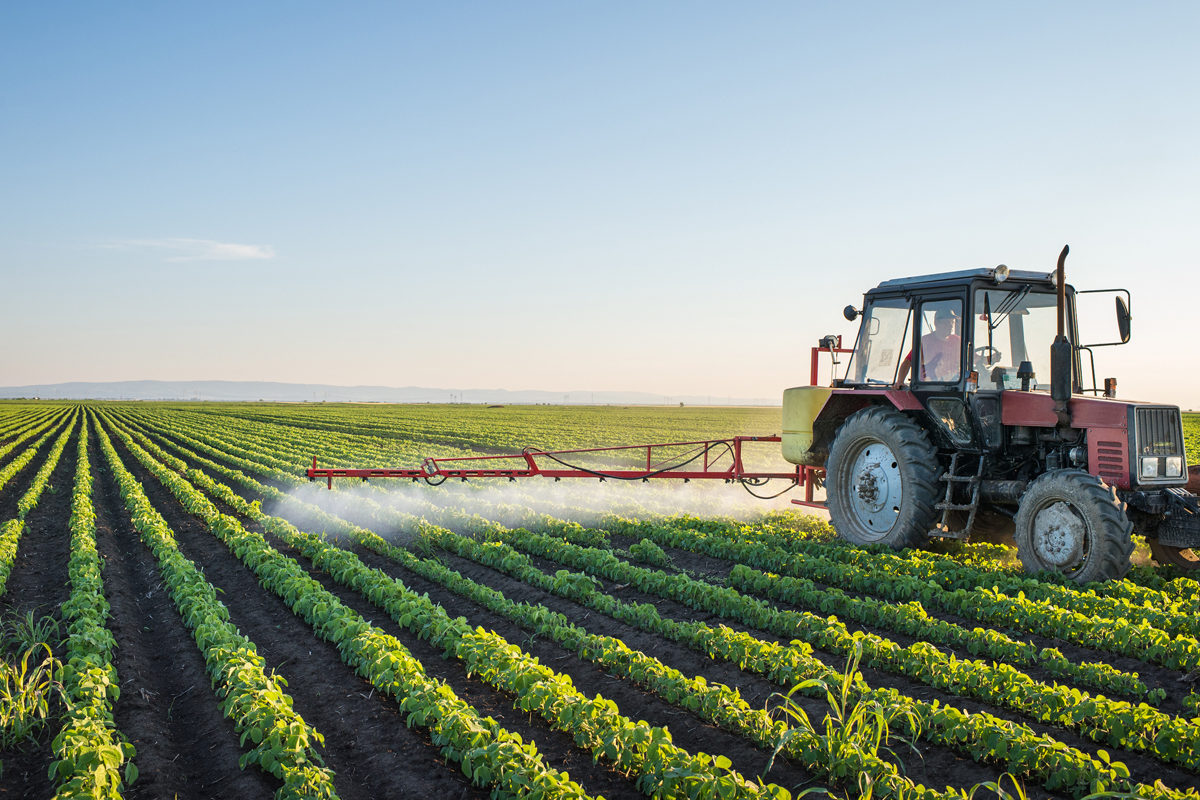
Published: May 26, 2019
Category: The Organic & Non-GMO Report Newsletter
By the Civil Eats Editors
This article is part of a series celebrating Civil Eats 10th anniversary.
Over the last decade, genetically modified crops (commonly referred to as GMOs), and the herbicides and pesticides they’re engineered to tolerate, have been at the core of the food and agriculture conversation. In that time, the percentage of crops grown using GMO seeds has continued to climb—in 2018, 90 percent of corn, 94 percent of soybeans, and 91 percent of cotton were genetically engineered.
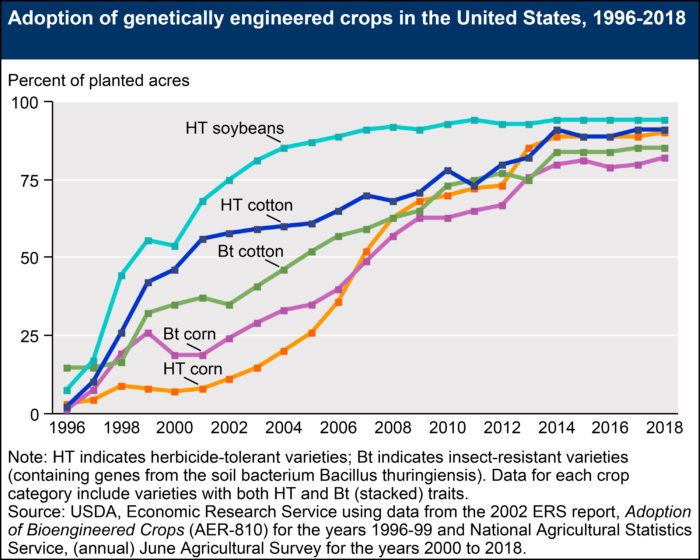
Even as government policies for decades have tended to support increasing pesticide use, the public response to genetic engineering appears to have waned. Case in point: When Civil Eats launched 10 years ago, food advocates had just begun to focus on labeling of GMO ingredients in food. But when the U.S. Department of Agriculture (USDA) posted its new GMO label law at the end of 2018—and revealed the label that will appear on a partial list of consumer products by 2022—it received little attention.
The fact that we are hearing less about GMOs in the news (and in our social media feeds) may signal a shift in awareness about the larger, older danger: the pesticides themselves—and the monocrops that require them.
In fact, a high-profile legal battle is raging over glyphosate, the active chemical in Roundup, the commonly used herbicide that was developed alongside Roundup Ready GMO seeds. Several courts have ruled in favor of cancer victims who were exposed to the chemical, and more lawsuits are in the wings.
Bayer—the German company that acquired U.S.-based chemical and seed giant Monsanto last year—is seeing its shares drop and hearing from concerned shareholders. Meanwhile, the USDA organic label—which is linked to reduced pesticide residue—continues to gain traction. And pesticides continue to be linked to a wide array of health and environmental hazards—from the coming insect apocalypse to the rise of a dangerous, drug-resistant fungus called Candida auris.
To celebrate Civil Eats’ 10th anniversary, we are conducting a series of roundtable discussions touching on some of the most important topics we’ve been covering since 2009. In the conversation below, we invited four experts to weigh in on GMOs and pesticides: Marcia Ishii-Eiteman, a senior scientist and director of the Grassroots Science Program at Pesticide Action Network North America; Carey Gillam, a veteran journalist and author and research director for U.S. Right to Know; Dr. Kris Nichols, a soil microbiologist who has worked extensively with farmers on alternatives to pesticides for the USDA’s Agricultural Research Service, the Rodale Institute, and others; and Adam Chappell, an entomologist and a fourth-generation farmer in Cotton Plant, Arkansas, who grows mainly non-GMO crops, and who has reduced his need for both pesticides and fertilizers by embracing plant diversity and soil health.
Civil Eats’ editor-in-chief, Naomi Starkman, and contributing editor Twilight Greenaway facilitated the wide-ranging discussion. The conversation has been edited for clarity and brevity.
When you reflect on how people were thinking and talking about GMOs and pesticides a decade ago, what has changed? How have your own perspectives and approaches to it changed in that time?
Marcia Ishii-Eiteman: It was 2008 when the United Nations-led International Assessment of Agricultural Knowledge, Science, and Technology for Development published its findings. And this was a five-year review similar to the Governmental Panel on Climate Change review, but looking specifically at agriculture. It asked: “What were the benefits from the past 50 years of how we have approached agriculture and what do we need to do differently?” I was one of the lead authors. There are 400 scientists and development experts from 80 countries and multiple U.N. institutions involved.
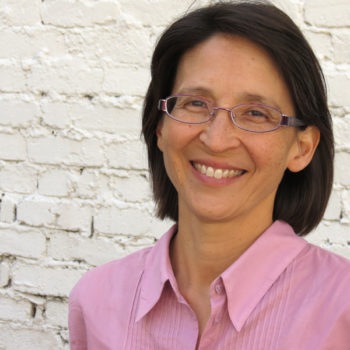
The main message was that business as usual is not an option. If we are to develop effective, resilient, healthy, functioning food and farming systems that can address climate change and weather the increased environmental, ecological, and economic stresses that lie ahead we have to change how we’re [producing food]. And that means investing in ecological farming systems, revitalizing local food systems and local economies, addressing social inequity and power imbalances and the undue influence of corporations—Big Agribusinesses—over family farmers and over about the world.
Over 95 percent of the governments involved approved all of these findings. Only the U.S., Canada, and Australia withheld approval, primarily around their concerns with the report’s critique of unregulated trade and the finding that GMOs had not done so much to reduce poverty but [instead had] advanced the sale of chemical pesticides.
So, these findings were dramatic and they were a kind of a shift, a recognition that things have to change. People began coming together, more conversations started happening about the possibility of really doing things differently at a political, social, and agricultural level.
But what we also saw happen over the past 10 years was a continuation of an intensification of the pace of corporate mergers and acquisitions—a real consolidation of corporations in all sectors of agriculture pesticide, poultry, livestock, and the retail industry. At the start of this 10-year period, there were about 10 corporations that controlled two-thirds of the global seed market and 10 controlled about 90 percent of the pesticides. Ten years later, three corporations control nearly two-thirds of the global seed market and over 70 percent of pesticides. So, we went from 10 to three mega giants in just a decade.
This corporate consolidation translates directly into corporate power and influence over policy makers. We have direct links between corporate power, such as Dow Chemical spending more than $40 million in lobbying since 2016, giving $1 million to fund Trump’s inaugural activities, and that translated directly into Trump’s choice of EPA administrator, whose first act was to overturn an EPA scientist’s ban on the brain-harming pesticide chlorpyrifos.
On the other hand, what I’ve observed over the last 10 years is an enormous upwelling of public interest and engagement around food and farming issues. Now, people are really making connections between how we treat the earth, the health of the soil, the health of our bodies, and farmworkers who grow our food. I’ve also seen agroecology rising up as a powerful solution and really a way forward for the U.S. and for the world.
Carey Gillam: I started covering food and agriculture as well as Monsanto, Dow, DuPont, and others in the late ‘90s. There was a real embrace at that time of new GMOs and pesticide techniques and how it was changing and revolutionizing agricultural practices. There were people back then warning about what this would mean for environmental health, biodiversity, human health, and that sort of thing. But I don’t feel like people started paying attention until around 2008 or 2009, and it has really been an awakening in this last decade.
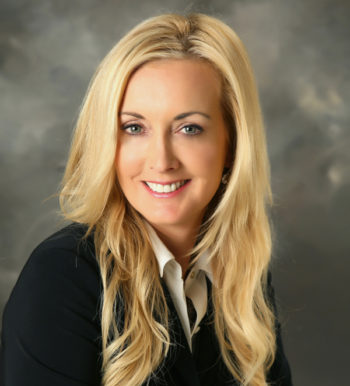
From my perspective, a lot of that has to do with the weight of science catching up. We have just an abundance of scientific research now that demonstrates how this pesticide-dependent food system—which genetically engineered crops are tied to, to a degree—causes harmful impacts, even though the companies sold this to us as environmentally friendly, sustainable agriculture. The science has caught up and demonstrated that while there were some gains for some farmers on a short-term basis, the long-term sustainability is not there. And what I’ve seen is that companies, consumers, farmers, pretty much everybody up and down the food chain is starting to see that.
We’re still in a very push-pull phase. There’s a lot of resistance from the big companies that have consolidated and become very powerful and don’t want to lose market share or profit. And they’re pushing very hard on our lawmakers and regulators to keep these chemicals in crops as a mainstay in agriculture.
On the other side, we’re seeing consumers saying “No, we’re going to vote with our wallet, we want something different.” We’ve seen food companies respond to that and we’re seeing farmers who are going back to some time-honored, traditional farming techniques like rotating crops and growing cover crops. We’re also seeing farmers who are trying to develop new techniques and become even more strategic.
I talk with and follow a group of farmers in the Midwest that call themselves the Idea Network Farmers, and they are doing such cool things to try to essentially match the yields from conventional agriculture but do it in ways that don’t rely on pesticides and really improve the soil health, protect water, etc. I think we’re still moving to a better place. But we’re definitely on the move.
Kris Nichols: Initially [GMO technology] was really seen as an incredibly good thing because we were able to theoretically use fewer pesticides and use pesticides that were a little less toxic. From a scientific standpoint, the idea was not to use pesticides or GMOs at the level at which they have been implemented and endorsed to be used. We’re seeing varieties of plants and insects that are able to overcome [and grow resistant] to the technology—and a lot of that has to do with the fact that we use so much of it over such a large scale.
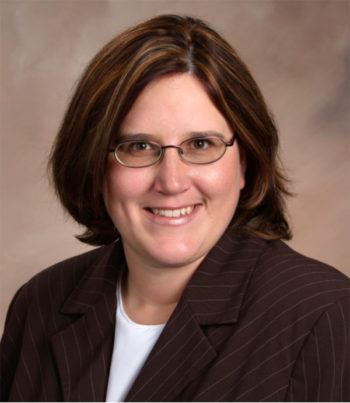
So it [originally] seemed like a really good thing, and it has become the less of a good; and part of it also was the fact that we didn’t—we weren’t allowed to—conduct all of the research that needed to be conducted to get a good understanding of what’s happening.
Over the last 10 years, I think we’ve gotten a better idea of not just the initial reaction to the use of these various types of chemicals and technology but also some of the secondary reactions that happen within both the plants and also the animals that are consuming the plants, including humans. And we now have a better understanding of what this technology means.
We’re now seeing farmers recognize something that is far more valuable than just the utilization of these technologies. As we look at being able to provide a higher quality of food to consumers, and consumers are getting more connected to where they’re food is coming from, farmers are recognizing the unintended consequences of the use of these technologies, including the incredible loss of soil quality and soil itself and the loss of productivity and resilience.
It’s really great to be able to see farmers recognizing that and at the same time starting to implement different practices and utilizing a systems approach, looking at how all of the organism are involved in the entire system and to naturally manage various types of pest and disease issues.
We’re recognizing that some of the things that have to do with the quality of the food—including antioxidants and polyphenolics—are often produced in response to various types of stresses, in particular some insect predation as well as some competition with different types of organism including different plant within the system. We’re now seeing that for us to able to grow not just the amount of food but the quality of food we need, we actually need to have some insect predation and a little bit of plant competition or other plants, [such as] polycropping or companion cropping.
A lot of information has come out about what’s happening with the use of GMO technology and the chemicals, but farmers have also been provided with ways in which they aren’t the
solution anymore. We’re looking at biological agents rather than chemical-based solutions, and I think that’s extremely exciting.
Adam Chappell: Ten years ago, and even before that, GMOs were marketed as the environmentally friendly way to do it. They said, “You’re going to use less pesticide because you can use this one broad spectrum pesticide and you’re going to gain efficiency.” But all we’ve done is created a treadmill that a lot of people are having a hard time getting off of.
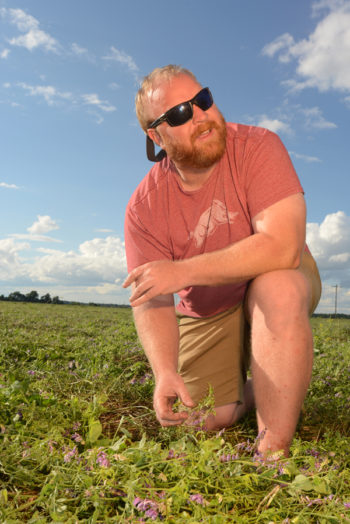
Roundup [or glyphosate] is a prime example. When Roundup Ready crops came out, that was a game changer. It the best thing since sliced bread for Palmer amaranth [a much-despised weed that can ruin crop yields]. So, we thought we had found the solution to all our problems, but it only took six years for Palmer to become completely resistant to glyphosate.
At that point, instead of trying to find ecological ways to contain that weed, we just turned to a different chemistry. We turned to [a class of herbicides called PPO-inhibitors]. Well, it took about three years for PPOs to become resistant and now we have Palmer resistant to four different herbicide classifications and all the people around me have turned to dicamba, but I read this winter they’ve got verified populations of Palmer that are resistant to 2,4-D and dicamba.
These guys around me are going to have to wake up and figure out how to do this another way. But the problem is the corporations have put the screws to us so hard and they’ve got such a grasp on everybody because of the desperation in the farming community, so anything they put out—these guys jump on it without even questioning it. And it’s because everybody in my world is working on a margin that is, in a lot of cases, negative. So, they’re desperate and these corporations are taking advantage of it.
We were going bankrupt trying to deal with Palmer amaranth, and we had spun ourselves into a hole with chemistry. And everywhere we turned, land grant university consultants, people from the companies, they all told us to use more spray—that was their answer for everything. And we recognized that was not working for us. So we stumbled on cereal rye [cover crops] as a cultural control and had some success with that.
And then I started investigating cover crops more and came across the likes of Ray Archuleta and Dave Brandt. I just started driving my wife crazy because I spent hours upon hours looking at YouTube videos and websites and trying to learn all I could because if I mention cover crops or anything like that around here, people either don’t know what you’re talking about or they think you’re crazy.
But the more I learned, the more I realized the importance of diversity in our fields and what that means for soil health and soil life, and above ground life. We’ve gone from trying to figure out how to control a weed to completely overhauling our system and improving the soil health in a way that has allowed us to reduce chemical use and we’re also starting to reduce fertilizer use significantly. And now we’re almost 100 percent non-GMO.
Kris Nichols: And I want to compliment Adam on what he’s doing because I think that it’s a tremendously risky job that you have. The margins are incredibly slim and you continue to take the risk to look outside of what industry-educated individuals tell you and all of the other pressures that exists telling you what to do. The fact that farmers are willing to take these risks is really heartening for me, and it harkens back to what farming is really all about.
I was privileged to be able to work with farmers up in North Dakota. But I started my farming education at the beginning of my life. My dad had a farm with his father and his brother and he went out on his own and purchased a farm the year I was born. When I was very young, we had a lot more diversity in the crops; my dad was growing food and it was incredibly important to do it in the best manner possible. But in my early twenties, the GMO technology came out and since then over the years the amount of diversity in the crops has dramatically decreased. He went from growing food to primarily growing low-quality feed and industrial products, and he hadn’t been having fun farming for a very long time.
But he came and visited me when I was in North Dakota and saw what the farmers were doing there and he started to think about organic matter in his soil, as well as cover crops and no-till, and he’s now having fun farming again. Farming isn’t about somebody telling you what to do, what chemicals to apply when and how to do it. It’s actually thinking for yourself and innovating.
Newer gene editing technologies, such as CRISPR, are being heralded as game changers. Do you think it has the potential to change the way pesticides are used in our food system? Or is it just about seed/pesticide companies’ bottom lines?
Carey Gillam: I have always remained optimistic that genetic engineering could bring value to the world. For instance, both DuPont and Monsanto were racing to bring drought-tolerant corn to the market several years ago, but neither was really a blockbuster—they didn’t work that well for various reasons in various geographies. Certainly, genetic engineering has been advantageous for growers of papaya. It depends on the technology, it depends on how it’s adapted, marketed, and pushed.
I think the things that are most profitable for the companies, [herbicide and pesticide-tolerance for commodity monocrops,] are not the best for the rest of us. And I don’t know if you can change that dynamic. There’s definitely genetic engineering that’s been done by academic institutions, nonprofit groups, and researchers that aren’t looking to make billions of dollars. So, when it comes to CRISPR, maybe?
I always want to cheer for science. But I think that our regulatory system is woefully inadequate when it comes to trying to assess the potential risks that come with the rewards. And we need a dramatic change on the regulatory front so that we can know that we’re protected, because what we’ve seen over the last few decades is that we’re not. And our regulatory agencies are essentially led by the nose by the companies making the money. I’m not going to condemn CRISPR. I think you have to look at every specific application in-depth to understand if there is more risk than reward or vice versa.
Marcia Ishii-Eiteman: It’s amazing that there is still so much obsession with looking for the silver bullet, that single-gene solution that is somehow going to transform agriculture and enable it to “feed the world.” I think we could have hours of discussion about any of these particular new genetic technologies, but then I think we’d miss the bigger picture. The corporations are investing heavily in these technologies for the purposes of extending control over the agricultural system.
It’s worth noting that Bayer (Monsanto) now has a monopoly stake in microbials. That’s one of the newest and expanding areas. They’re editing DNA to increase the pesticidal properties of microbes. They’re using big data-enabled, precision ag to “see and spray” proprietary fungicide and herbicides. They’re using artificial intelligence, hyper-spectral sensing technology, satellite imagery; they’re moving into big data with a
merger with John Deere to access very fine-grained data from farmers’ fields and then provide recommendations in real time to respond to pest issues.
This is not to say that there might not be an edited microbe that when applied as a seed coating—which is in the works—might have some temporary beneficial impact in terms of increased production.
But in this era of climate change—and really serious environmental challenges coming down the line—this is all a big distraction and it pulls tremendous resources as well as public resources that really should not be going into supporting increased corporate control over our food system. We have the solution—and it’s what farmers like Adam are doing. A growing number of farmers are diversifying. What we need is not more narrow, patented monocultures, but really a diversification of our agroecosystem, above and below ground of crops, of farmers knowledge and culture.
Any ideas about how we can avoid pitting organic, conventional, and regenerative farmers against one another? How we can encourage them to work together in a less reductive or polarizing way?
Adam Chappell: My divide with organic is not the actual organic product. It’s what they have to do to make that—all the tillage and [disruption of the soil needed to kill weeds without herbicide]. That’s one of the most destructive things you can do for soil life and soul health, and that’s the part that I have the hardest time with.
The public thinks that organic is the safest and all that. And from a chemical standpoint it may be, but from a from a soil health and environmental standpoint, until they figure out how to adapt no-till, the run-off from [an organic field] is going to be exponentially higher than one like mine, and just because they’re using manures for their fertility needs doesn’t mean that’s not a huge phosphate load going into the watershed.
We’re going to have to couple no-till with organic. I believe Dave Brandt and Gabe Brown are working on a no-till organic system. Now, I don’t have any ground that’s even eligible for organic certification and there’s not a big market for it here in the South; non-GMO is about as far as they go around here. So, it’s not going to be an issue for me for several years. But that’s what has to come together.
Kris Nichols: I was recently at the MOSES conference and I taught an organic university session with a farmer from Iowa who is not organic. We were focusing on this idea of no-till organic and how we can bridge the two together. That’s the framing that I’ve tried to take—because I’ve worked a lot with both no-till farmers and organic farmers. There is a lot that they can learn from each other, but there are ways in which things become very divisive between the two communities.
I’ve told both groups: “Chemical tools and mechanical tools should be your tools of last resort” and I try to figure out a biologically based tool for them to utilize first. When I’ve worked with organic farmers I’ve said, “You have to think of tillage in the same way that you want a non-organic farmer to think about their use of chemicals. Now that doesn’t mean that there aren’t situations in which you might use that tool, at least temporarily.”
So often these discussions become more about the stick rather than the carrot. They’re more about basically slapping farmers’ hands because they’re doing something that is “bad,” rather than helping them understand all their options. I try to show them that they can do something different—and it’s going to provide them with these potential benefits that will allow them to thrive over the long term.
Carey Gillam: One thing we haven’t really talked about is federal dollars, research dollars, and public policy. We spend so many tax dollars on subsidies for corn and other [commodity crops]. We have a lot of research dollars lined up that supports the conventional system and the farmers that I’ve talked to in different networks are starting to get a little bit of research money. But we really need a systemic change, a paradigm shift where we encourage our government and our universities to put more money, time, and attention into alternative farming systems. We need a better understanding of how to find this space between organic and conventional and what is truly regenerative. And we really need to rethink the subsidy package, and what we’re supporting and encouraging right now because we don’t need more corn.
Adam Chappell: Agreed. We don’t need more corn.
Marcia Ishii-Eiteman: We haven’t yet spoken about farmworkers and that community is crucial to our food and farming system. Farm work is one of the most dangerous professions in the U.S. and pesticide poisonings are [a big part of that]. In the last 10 years, we’ve had some important wins for farmworker protections. In 2015, we finally got to revise the Agricultural Worker Protection Standard—it took about 15 years of work, but it has been really critical to protect our 2 million workers. There is also increased reporting on farm pesticide use, and children under the age of 18 [won’t] be required to handle pesticides. So that’s good; enforcement and implementation is still in question.
Unfortunately, it appears that farmworker poisonings aren’t necessarily going down; we don’t have enough data to be able to really see this, but we know that we can do better and some of this involves taking extremely harmful pesticides, like fumigants, out of the fields. And this gets back to designation of federal resources, and directing our land grant universities to do research into more alternatives to these highly hazardous pesticides so that the lives of our farmworkers aren’t under threat from poisoning.
We have some challenges in the federal arena right now, but in the absence of leadership or in the actual unraveling of federal regulations, we are seeing communities and states step up. Maryland Oregon, and California have banned some of the most toxic pesticides and will thereby be able to protect farmworkers.
Reprinted with permission by Civil Eats.
To view original article, visit:
A Decade of Pesticides, GMOs, and Alternatives to Chemical-Intensive Farming








